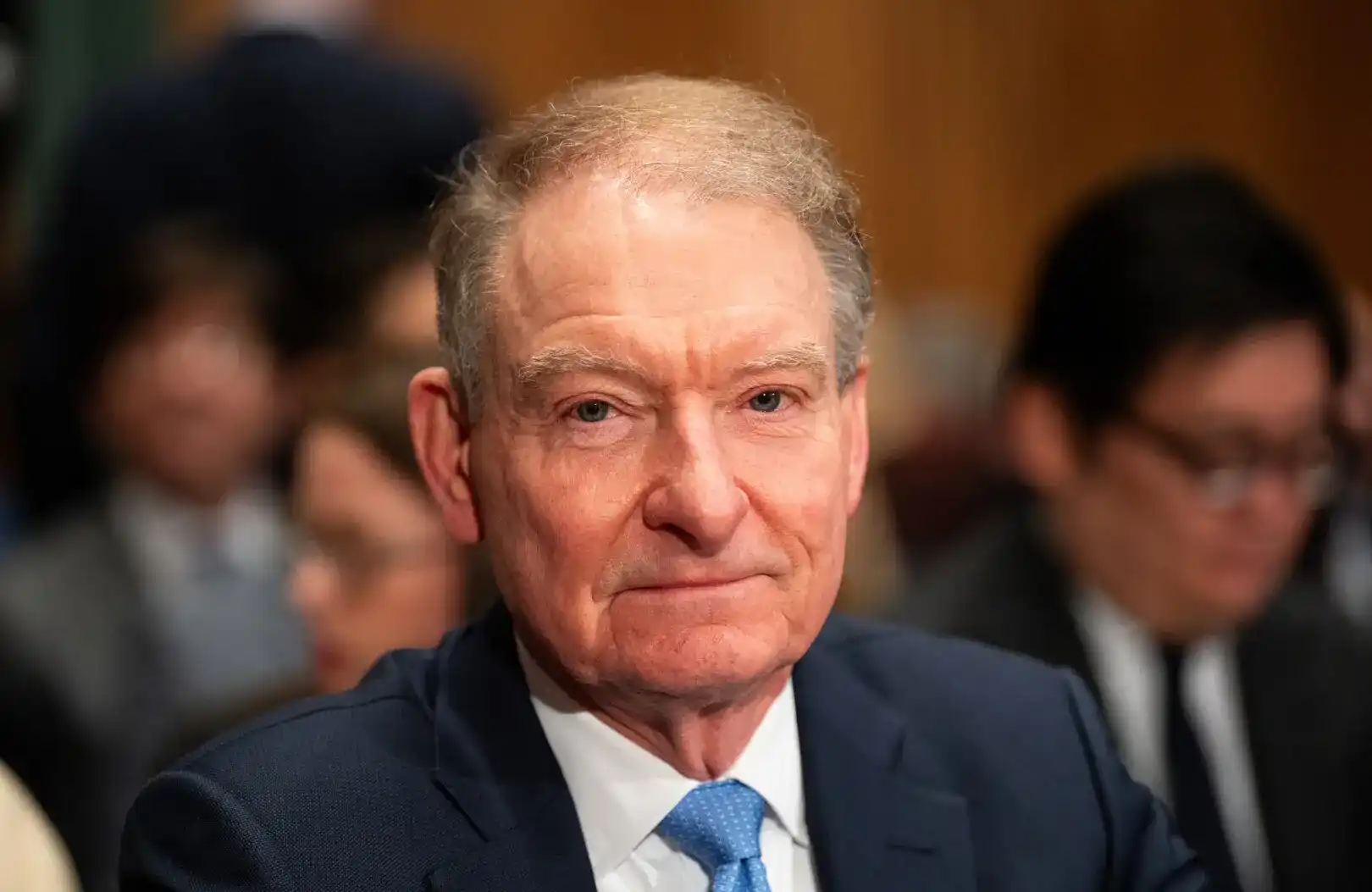Why is the US Dollar Stablecoin the New Dollar 3.0?
Original Article Title: "Why is the US Dollar Stablecoin the New Dollar 3.0?"
Original Author: Kai Ye, Huaxia Digital Capital
Looking back at history, we will find that the US dollar's dominant position in the global financial system did not come out of nowhere. The US dollar's ability to be widely used globally has gone through multiple stages of evolution. From the establishment of the Bretton Woods system to the rise of the petrodollar, and now to the US dollar stablecoin of today, the hegemony of the US dollar has been continuously consolidated and strengthened. Today, we are entering a new era—the US Dollar 3.0 era, and the representative feature of this era is the rise of the US Dollar Stablecoin.
The emergence of US Dollar Stablecoins (such as USDT, USDC, etc.) is not only a product of technological innovation but also represents a significant transformation of the global financial system. Through stablecoins, the influence of the US dollar is no longer limited to the traditional banking system and payment networks. It has begun to permeate the world's digital currency markets through blockchain technology, thus forming a new global payment and financial mechanism.
So why is the US Dollar Stablecoin referred to as the "new 3.0 era" of the dollar? What does its emergence mean for the global financial system, the US government, and emerging markets? Let's discuss this question together.
1. The "Dam" of US Debt is Forcing the US Government to "Find Money"
The US debt issue is not a new development and has become a focus of the global financial markets. Today, the total US debt has soared to $36 trillion and is rapidly increasing each year. To sustain this massive debt, the US government relies on global market funding, especially through issuing bonds to cover the budget deficit. However, traditionally major buyers of US debt—such as China and Japan—are gradually reducing their pace of purchasing US Treasury bonds. This situation has put the US government under immense financing pressure.
To address this issue, the US government passed the "GENIUS Act," which changed the rules of the global stablecoin market. Under this act, the reserve funds for all US Dollar stablecoin issuances must be pegged to cash or short-term US Treasury bonds, meaning 1 US Dollar stablecoin must be equal to 1 US Dollar of short-term Treasury bonds. This approach has turned US debt into the "legal base" of the US Dollar stablecoin, implying that any institution wanting to issue a US Dollar stablecoin must first purchase short-term US Treasury bonds. This change is akin to "opening the floodgates" for the US government's fiscal crisis while also tightening the link between stablecoins and the US Treasury bond market.
2. How Does On-chain US Dollar "Soak Up Liquidity"?
As the global demand for US dollar stablecoins continues to rise, stablecoin issuers such as Tether have started to switch most of their reserve assets to short-term US Treasuries. For example, by 202x, Tether has already moved approximately 75% of its reserve assets to the short-term US Treasury market. This means that stablecoin demand will become a significant supporting force for the US Treasury market—global investors (especially stablecoin users) are providing low-interest funding to the US government, which in turn benefits from fast payments and settlements through stablecoins.
This shift is not only happening in developed countries. In some emerging markets such as Nigeria, the Philippines, and Vietnam, USDT and other US dollar stablecoins have become primary payment tools, especially in remittance scenarios. For instance, Filipino overseas workers can swiftly and inexpensively remit their salaries back home using platforms like PayPal, bypassing the high fees of traditional remittance channels.
However, the impact of US dollar stablecoins goes beyond the payment domain. In these countries, the use of US dollar stablecoins is starting to affect the local monetary policy. For example, in Nigeria, due to the high premium of USDT (which has been as high as 20% relative to the naira), the country's local currency, the naira, has experienced significant devaluation, undermining the effectiveness of monetary policy. This "dollarization" phenomenon has put pressure on the financial sovereignty of many emerging markets, prompting them to reassess the challenges posed by US dollar stablecoins.
3. Stablecoins and US Treasuries: Sweet Symbiosis or Risky Siamese Twins?
The relationship between US dollar stablecoins and US Treasuries is highly intricate and can be seen as a form of mutual symbiosis. They rely on each other, together forming a new global financial ecosystem. During the minting phase, the demand for short-term US Treasuries by stablecoins continues to grow, with stablecoins providing funding support to the US government through the purchase of these treasuries. On the other hand, during the circulation phase, stablecoins, through their global payment flows, also serve as a "free sales" channel for US Treasuries in the global market.
However, this relationship is not without risks. The interdependence between stablecoins and US Treasuries may pose some potential risks. For instance, if a massive redemption wave occurs in the stablecoin market, stablecoin issuers would need to sell an equivalent amount of US Treasuries to redeem these stablecoins, potentially causing severe turbulence in the Treasury market and driving up bond yields. If US bond yields skyrocket, the US government's financing costs would also increase, exacerbating the country's debt burden.
Moreover, the "dollarization" phenomenon in emerging markets also brings risks. If these countries overly rely on US dollar stablecoins, any exchange rate fluctuations or policy changes could jeopardize their monetary policy independence, threatening their economic sovereignty.
4. Dollar 3.0: From Bretton Woods to On-Chain Dollar
The US dollar's global hegemony was not built in a day. From the establishment of the Bretton Woods system to the rise of the petrodollar, and now to today's dollar stablecoins, we can observe the dollar's gradual evolution in the global financial system.
Dollar 1.0 Era: Under the Bretton Woods system, the US dollar, pegged to gold, became the core currency for global trade and payments. This system, through a clearing monopoly, ensured the dollar's dominant position.
Dollar 2.0 Era: Entering the era of the petrodollar, the dollar's influence expanded further, especially in its dominance in the global energy and debt markets. The dollar was widely used in oil trading and international debt settlement.
Dollar 3.0 Era: Today, with the rise of dollar stablecoins, the dollar has begun to enter the digital asset space through blockchain technology. These on-chain dollars not only completely free themselves from the traditional banking system in terms of payments but also, through close integration with the US Treasury market, allow global investors to enjoy quick payments while inadvertently providing funding support for the US government's debt.
What does this change mean for the United States? Through dollar stablecoins, the US government has "outsourced" its debt crisis to individual and corporate investors worldwide. This approach enables the US to obtain significant external funds without increasing domestic burdens, while also driving global demand for the dollar.
However, for emerging markets, the proliferation of dollar stablecoins is eroding the financial sovereignty of these countries. With the widespread use of "on-chain dollars," the monetary policies of many countries are starting to lose independence, and their economies are to some extent influenced by the dollar's fluctuations.
Conclusion: Future Challenges of Dollar 3.0
The emergence of dollar stablecoins marks a transformation in the global dominance of the dollar. The dollar no longer solely relies on the traditional financial system; it has expanded into the digital world through blockchain technology and occupies a leading position in global payments and financial systems. However, behind this "Dollar 3.0" are significant opportunities as well as unavoidable risks. In the future, whether dollar stablecoins can successfully maintain their global dominance will depend on finding the perfect balance between stability, compliance, market demand, and risk management.
Huaxia Digital Capital is a digital investment bank focused on the RWA (Real-World Asset Tokenization) track, dedicated to RWA track market research and education, issuance and investment incubation, RWA asset management platform, digital financial innovation, and other solutions, aiming to build a bridge between real-world assets and the value of the crypto world.
#ARAW Always RWA Always Win! By 2025, the RWA market will rapidly find its place in the jungle of growth. For friends who are passionate about the topic of RWA and stablecoins, you can add WeChat YekaiMeta to join the discussion group for communication.
This article is from a contribution and does not represent the views of BlockBeats.
Welcome to join the official BlockBeats community:
Telegram Subscription Group: https://t.me/theblockbeats
Telegram Discussion Group: https://t.me/BlockBeats_App
Official Twitter Account: https://twitter.com/BlockBeatsAsia
 Forum
Forum OPRR
OPRR Finance
Finance
 Specials
Specials
 On-chain Eco
On-chain Eco
 Entry
Entry
 Podcasts
Podcasts
 Activities
Activities









